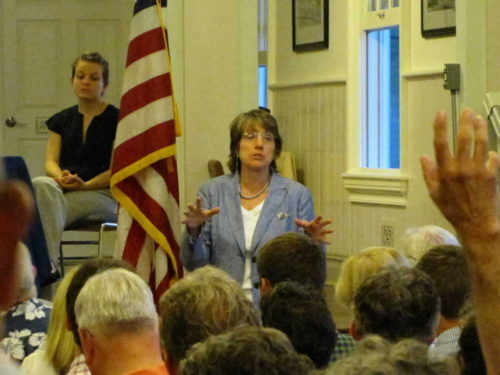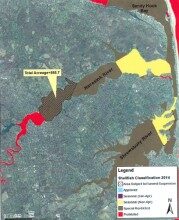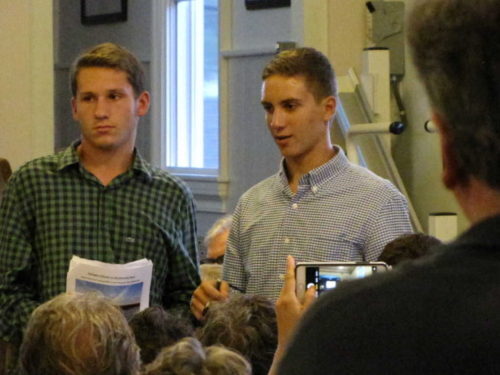
By JOHN T. WARD

Among many questions to be addressed were what’s causing a rise in fecal coliform levels, and how can it be stopped?
“We all know what the smoking gun is: stormwater runoff,” Christopher Obropta, a specialist in water resources with the Rutgers Cooperative Extension. 
The event, organized by Clean Ocean Action, came 18 months after the the New Jersey Department of Environmental Protection suspended shellfish harvesting in 566 acres of the Navesink because of unacceptably high levels of fecal coliform, bacteria that occur in the intestines of warmblooded animals. This February, the DEP finalized the downgrade.
Cindy Zipf, Clean Ocean Action’s founder and executive director, told the audience that the purpose of the event was to rally not only government agencies but environmental organizations and individuals to attack the problem.
“We’re going to lose that final direct-harvest clam bed [in the New York region] if we don’t do something,” she said. Invoking the ocean-dumping of raw sewage that gave rise to the Sandy Hook-based nonprofit in 1984, she said, “nobody thought we could bring back the ocean, but we did.”
Clean Ocean Action attorney Zach Lees unveiled the findings of a yearlong study he authored that takes a comprehensive historical and scientific view of the Navesink.
Among its findings: the waterway is “safe for boating,” according to the DEP, but doesn’t meet swimmable water quality standards.
“We’re still getting fecal counts over what we consider safe for swimming,” Lees said. Zipf called the safe-boating designation “a pretty low bar.”
Here’s the full report: COA Navesink Pathogens 062816
The event featured presentations by a handful of experts, including Bob Schuster, of the DEP’s bureau of marine water monitoring, who described changes in agency’s nonpoint source tracking program aimed at expediting the delivery of data about pollution levels to municipal officials, with the aim of attacking bacterial incursions at their sources.
Those are often leaking septic systems and broken or overwhelmed sanitary sewer systems, he said.
Among those in the audience were two Red Bank council members, Linda Schwabenbauer and Mark Taylor; at least five members of the borough environmental commission; and Fair Haven Mayor Ben Lucarelli, whose town was the subject of a case study in small, affordable steps that communities can take to redirect rainwater into the ground, where it’s filtered, rather than directly into waterways.
Obropta described the development of an action plan that called for reducing the 18 million gallons of runoff that would flow from Fair Haven into the Navesink in a typical rainfall.
“Most of the impervious surfaces here are directly connected to the Navesink River,” Obropta said.
The plan focuses on institutions with large impervious surface footprints, such as schools, municipal facilities and churches, and projects such as rainwater collection for use in washing fire trucks. Many projects can be designed to involve boy and girl scouts, creating new stakeholders, he said.
Here’s the Fair Haven plan: Fair Haven Impervious Reduction Plan June 2016
Also present were Rumson-Fair Haven Regional students Tyler Lubin and Noah Tucker, who gave an elevator pitch for their initiative to install bio-filters in or around stormwater drains.
Karen Reynolds, co-owner of Maine-based Environmental Canine Services, spoke about the efficacy of using trained dogs to identify and track the sources of pathogens.





















